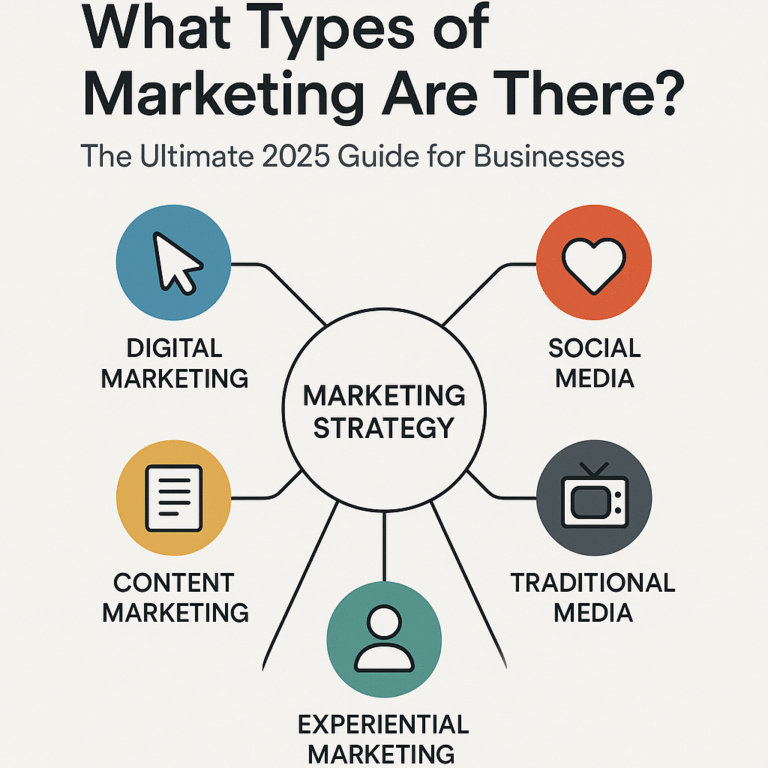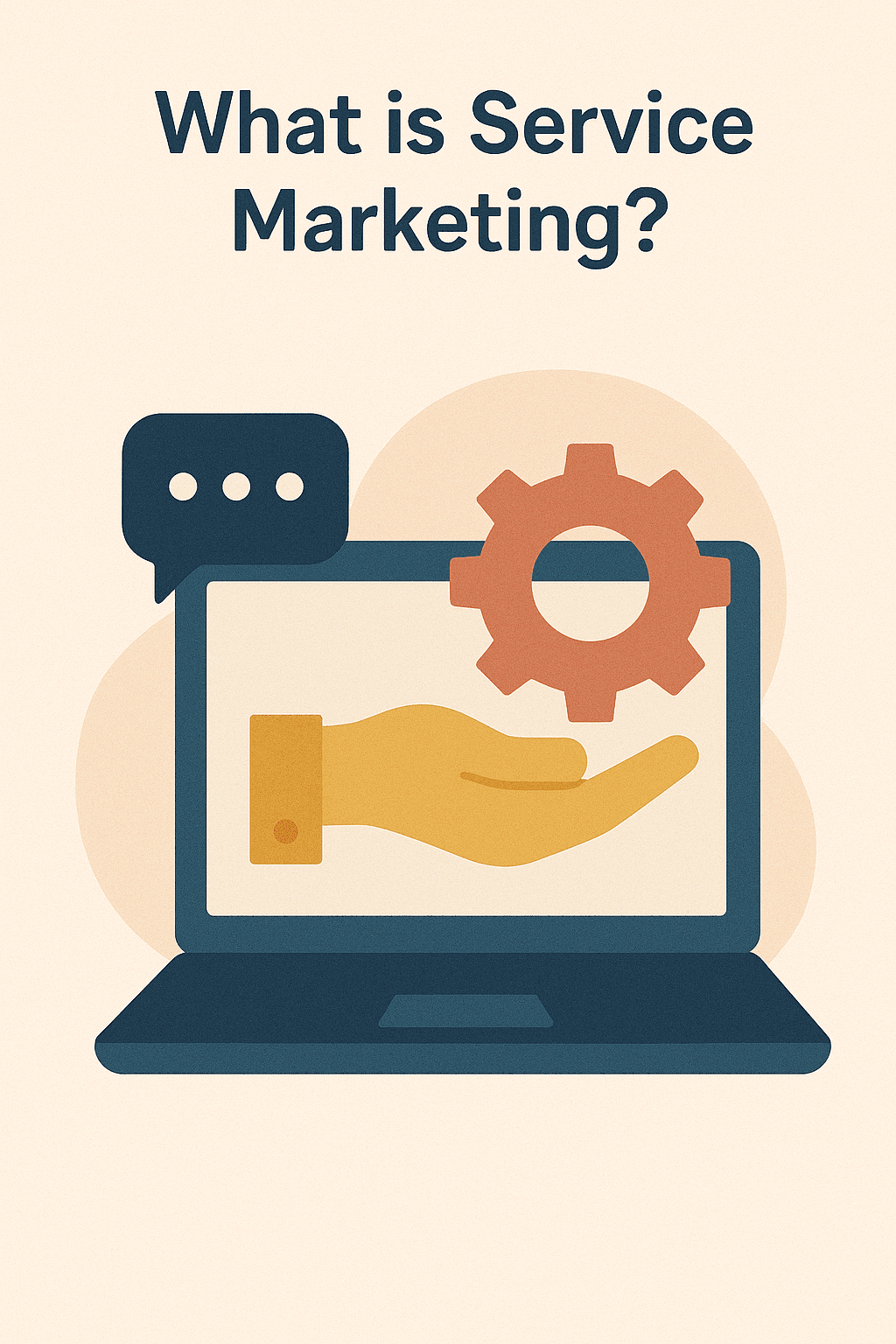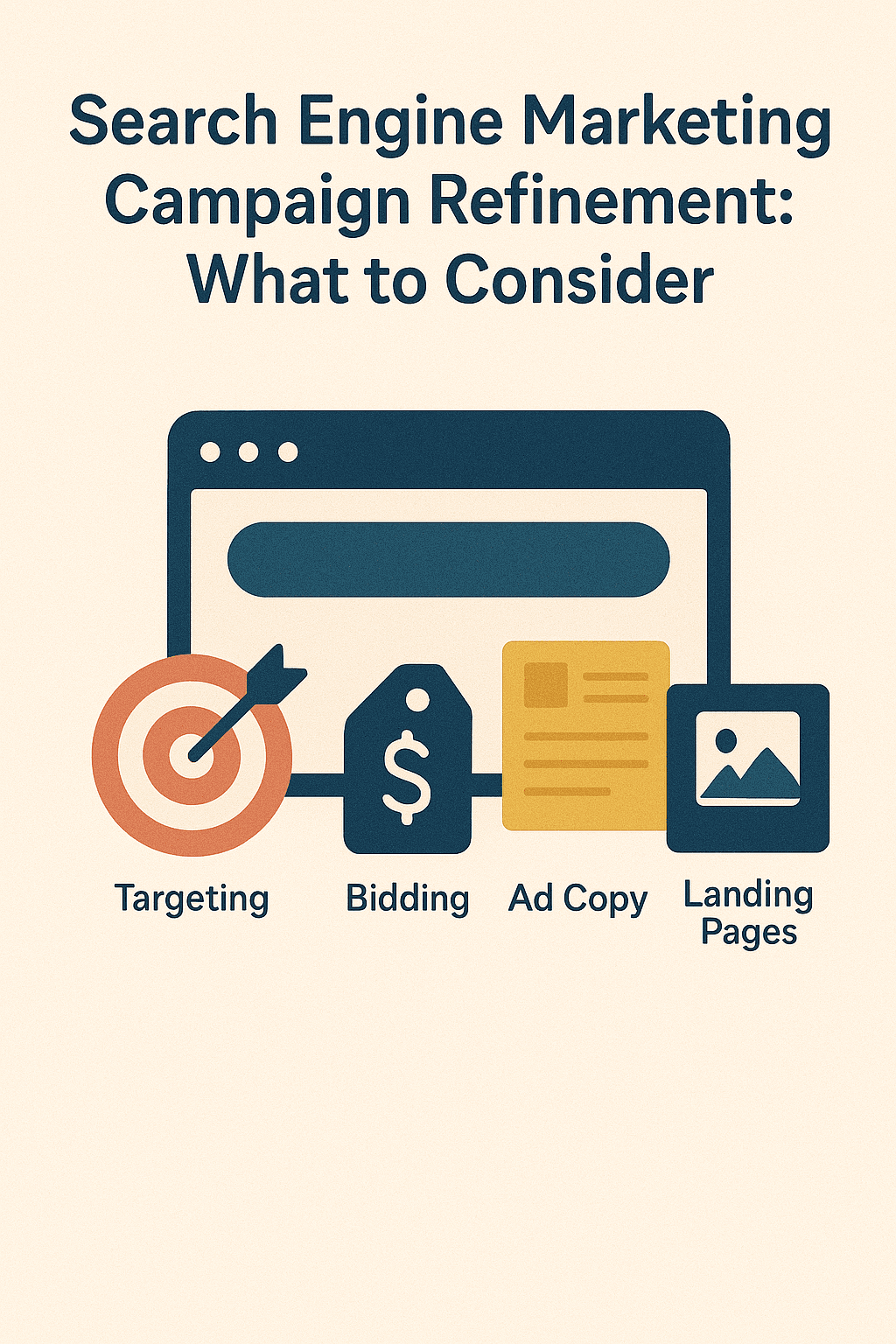The Architect’s Blueprint: How to Build a Powerful Marketing Strategy for 2025
You have a brilliant product. Your service is second to none. You’re passionate, driven, and ready to solve your customers’ problems. There’s just one issue: nobody knows you exist. You’re shouting into the void, and the silence is deafening. Does this sound familiar?
In my career developing and scaling digital products, I’ve seen this scenario play out time and time again. The most common point of failure isn’t the product itself—it’s the absence of a coherent plan to connect that product with the people who need it. Many businesses mistake marketing for simply running ads or posting on social media. They are throwing tactics at a wall, hoping something sticks.
This is not marketing. This is gambling.
True marketing is not a series of desperate acts; it is a deliberate, strategic system. It’s the architect’s blueprint you design *before* you ever pick up a hammer. This guide is that blueprint. We will move beyond the buzzwords and provide a step-by-step, actionable framework for building a robust marketing strategy from the ground up—one that drives sustainable growth and turns your business from a hidden gem into a market leader.
The Critical Foundation: Strategy vs. Tactics
Before we lay the first brick, we must understand the landscape. The most common point of confusion in marketing is the difference between strategy and tactics. Getting this right is everything.
- Strategy is your high-level plan. It’s the “what” and the “why.” It defines who your customers are, what you want to achieve, and how you will position yourself in the market to win. Your strategy is your map to a destination.
- Tactics are the specific actions you take to execute that strategy. They are the “how.” Tactics include things like writing a blog post, running a Google Ad campaign, sponsoring an event, or creating a TikTok video. Tactics are the individual turns you take while following the map.
A strategy without tactics is just a dream. But tactics without a strategy are aimless, expensive, and exhausting. Our goal today is to build the map, so every action you take has purpose and direction.
“Marketing is no longer about the stuff that you make, but about the stories you tell.”
The 7-Step Blueprint for Building Your Marketing Strategy
Ready to get to work? This seven-step process will guide you from a blank page to a comprehensive, actionable marketing strategy. Follow it closely, and you’ll build a solid foundation for all your future marketing efforts.
-
Define Your Core Business Goals
Your marketing strategy cannot exist in a silo. It must be a direct servant of your overarching business objectives. Before you can think about leads or clicks, you must ask: what is the business trying to achieve in the next year? The next five years? Your answers are the ultimate destination for your marketing map.
Examples of clear business goals:
- Increase overall company revenue by 30% in fiscal year 2025.
- Expand into the West Coast market, opening three new physical locations.
- Achieve a 25% market share in the premium pet food category.
- Increase the company’s profitability margin from 15% to 18%.
Your marketing goals will flow directly from these. If the business goal is to increase revenue, a marketing goal might be to generate a certain number of qualified leads. If the goal is expansion, marketing’s goal is to build brand awareness in the new region. Always start here.
-
Conduct Deep Market & Competitor Research
You cannot win a game without understanding the players and the playing field. This stage is about gathering intelligence. The most effective tool for this is the classic SWOT Analysis, which forces you to be brutally honest about your position.
- Strengths (Internal): What do you do better than anyone else? A proprietary algorithm, exceptional customer service, a beloved brand?
- Weaknesses (Internal): Where are you vulnerable? A small budget, lack of brand recognition, a key missing product feature?
- Opportunities (External): What market trends can you exploit? A new technology, a competitor’s misstep, a change in consumer behavior (e.g., the rise of remote work)?
- Threats (External): What external factors could harm you? New regulations, a looming recession, a powerful new competitor entering the market?
Alongside the SWOT, conduct a thorough competitor analysis. Identify 3-5 direct and indirect competitors. Analyze their messaging, pricing, social media presence, and customer reviews. What are they doing well? Where are they failing? Their weaknesses are your opportunities.
-
Identify Your Target Audience (Build Buyer Personas)
If you try to market to everyone, you will connect with no one. The single most important part of your strategy is defining precisely who your ideal customer is. The best way to do this is by creating detailed buyer personas.
A buyer persona is a semi-fictional representation of your ideal customer based on market research and real data. It’s more than just demographics. A strong persona includes:
- Demographics: Age, gender, income, location, job title (e.g., “35-year-old female, living in a Denver suburb, working as a project manager”).
- Psychographics: Goals, values, interests, lifestyle (e.g., “Values sustainability, strives for work-life balance, loves hiking and trying new craft breweries”).
- Pain Points & Challenges: What problems keep them up at night that your product can solve? (e.g., “Struggles to find time for healthy meal prep,” “Feels overwhelmed by cluttered project management tools”).
- Watering Holes: Where do they “hang out” online and offline? (e.g., “Listens to ‘The Daily’ podcast, follows specific influencers on Instagram, is a member of a local running club”).
Give your persona a name, like “Sustainable Sarah” or “Tech-savvy Tom.” This makes them feel real and ensures your entire team is creating marketing for the same person.
-
Set SMART Marketing Objectives and KPIs
With your business goals defined and your audience identified, you can now set specific marketing objectives. These aren’t vague hopes; they are concrete, measurable targets. Use the SMART framework:
- Specific: State exactly what you want to achieve.
- Measurable: How will you track progress and success?
- Achievable: Is it realistic given your resources?
- Relevant: Does it directly support a core business goal?
- Time-bound: When will you achieve it by?
Example of a poor objective: “Get more website traffic.”
Example of a SMART objective: “Increase organic website traffic from our target audience in the U.S. by 50% (from 10,000 to 15,000 monthly visitors) by the end of Q4 2025 by publishing 12 targeted, SEO-optimized blog posts.”
For each objective, define the Key Performance Indicators (KPIs) you’ll use to measure it. For the example above, KPIs would be organic sessions, keyword rankings, and conversion rate from blog traffic.
-
Choose Your Channels, Tactics & The Marketing Funnel
Now, and only now, do we talk about tactics. Based on your audience’s “watering holes,” where is the best place to reach them? This is where you map your tactics to the classic marketing funnel (often represented by the AIDA model).
- Awareness: Making your audience aware that you exist.
- Tactics: SEO, content marketing (blogging, videos), social media marketing, public relations, targeted advertising.
- Interest & Consideration: Nurturing their interest and helping them evaluate you as a solution.
- Tactics: In-depth webinars, email marketing sequences, detailed case studies, downloadable guides, free trials.
- Conversion (or Action): Persuading them to make a purchase, sign up, or become a customer.
- Tactics: Optimized sales pages, retargeting ads, clear calls-to-action (CTAs), special offers, sales consultations.
- Loyalty & Advocacy: Turning customers into repeat buyers and fans.
- Tactics: Loyalty programs, excellent customer support, exclusive content for customers, referral programs.
You don’t need to be on every channel. Choose the 2-3 channels where your target audience is most active and focus on doing them exceptionally well.
- Awareness: Making your audience aware that you exist.
-
Determine Your Marketing Budget
Your strategy needs fuel, and that fuel is your budget. There are several ways to approach this, and the best method often combines a few:
- Percentage of Revenue: A common model where you allocate a set percentage of your total revenue (or projected revenue) to marketing. This often ranges from 5% for established B2B companies to over 20% for high-growth DTC startups.
- Goal-Oriented (Objective-Based): You calculate the costs associated with the tactics needed to hit your SMART objectives. For example, if your goal is 500 new customers and you know your average Customer Acquisition Cost (CAC) is $50, you know you need a budget of at least $25,000.
- Competitor-Based: You budget based on matching or exceeding the spending of your key competitors. This can be effective but also risky if their strategy is flawed.
Be realistic. A grand strategy with a tiny budget is destined to fail. It’s better to have a focused strategy that is fully funded than a broad one that is under-resourced.
-
Execute, Measure, and Iterate
A marketing strategy is not a “set it and forget it” document. It is a living, breathing plan that must be constantly tested and optimized. The “Execute, Measure, Iterate” loop is the engine of modern marketing.
- Execute: Launch your campaigns. Create the content. Run the ads. Put the plan into motion.
- Measure: This is where your KPIs become critical. Use tools like Google Analytics, your CRM, and social media analytics to track everything. Are you hitting your targets? Is your CAC higher or lower than expected? Which channel is driving the most valuable leads?
- Iterate: Based on the data, make adjustments. If blog content is driving high-quality traffic but your social media ads are falling flat, reallocate budget and effort from the ads to content creation. Double down on what’s working and cut what isn’t.
Schedule a monthly or quarterly review of your strategy to analyze performance against your SMART objectives and make course corrections.
Case Study: “Urban Bloom” Puts the Blueprint into Action
Let’s see how this works for a fictional U.S. direct-to-consumer (DTC) brand called Urban Bloom, which sells sustainable, stylish home goods for small-space living.
- Business Goal: Increase online sales by 40% in the next 12 months.
- Research (SWOT):
- Strength: Unique, eco-friendly product designs.
- Weakness: Low brand awareness outside of their city.
- Opportunity: Growing consumer trend towards sustainability and apartment living.
- Threat: Large retailers like IKEA and West Elm are launching their own “small space” lines.
- Target Audience: They create “Anna, the Apartment Dweller.” Anna is 28, lives in Austin, TX, rents a 700 sq. ft. apartment, works in tech, is environmentally conscious, and follows home decor influencers on Instagram and Pinterest. Her pain point is finding beautiful furniture that fits her small space and aligns with her values.
- SMART Objective: Generate $200,000 in sales from new customers via organic and paid social channels by the end of the fiscal year, maintaining a Customer Acquisition Cost (CAC) below $60.
- Channels & Funnel:
- Awareness: They decide to focus on Pinterest and Instagram, Anna’s primary “watering holes.” They’ll run targeted ads showcasing their products in beautiful, small-apartment settings. They’ll also partner with mid-tier home decor influencers.
- Consideration: They’ll create an “Ultimate Guide to Small Space Design” PDF, which users can download in exchange for their email. This starts an email nurture sequence.
- Conversion: They’ll use retargeting ads to show Anna the exact products she viewed on their site and offer a 10% discount on her first order.
- Budget: Based on their objective and estimated CAC, they set an initial quarterly budget of $30,000 for ads, content creation, and influencer collaborations.
- Measure & Iterate: They use Shopify analytics and Google Analytics to track sales by channel. After Q1, they find that Pinterest is driving sales at a $45 CAC, while Instagram’s CAC is $75. They decide to shift more of their ad spend from Instagram to Pinterest and test new creative on Instagram to lower its CAC.
Frequently Asked Questions (FAQ)
How much should a small business spend on marketing?
There’s no magic number, but a common benchmark recommended by the U.S. Small Business Administration (SBA) is 7-8% of your gross revenue. However, for new businesses in a growth phase or in highly competitive industries, this can be much higher—often in the 12-20% range. The best approach is the goal-oriented method: define what you want to achieve and calculate the cost to get there.
What’s the difference between marketing and sales?
They are two sides of the same coin, but with distinct roles. Marketing is the process of creating awareness, generating interest, and nurturing leads to make them “sales-ready.” It’s a one-to-many communication. Sales is the process of taking those qualified leads and converting them into customers, typically through one-to-one interaction. A good marketing strategy makes the sales team’s job easier by providing them with educated and interested prospects.
How long does it take to see results from marketing?
It depends entirely on the tactics. Paid advertising (like Google or Facebook Ads) can generate results almost immediately, but the results stop as soon as you stop paying. Content marketing and SEO are long-term strategies; it can often take 6-12 months to see significant organic traffic and lead generation, but the results are more sustainable and compound over time. A good strategy balances short-term wins with long-term investments.
Conclusion: Your Strategy is Your Competitive Edge
In a crowded marketplace, the businesses that win are not necessarily those with the best product, but those with the best strategy to connect that product to its people. Your marketing strategy is more than a document; it’s a declaration of who you are, who you serve, and how you’ll win their attention and trust.
By following this blueprint, you move from guesswork to intentional growth. You replace chaos with clarity. You stop wasting money on aimless tactics and start making strategic investments that yield compounding returns. Take the time to build your blueprint. Be thoughtful, be honest, and be bold. Your future customers are out there waiting to hear your story. It’s time to show them the way.
Related Learning Resources
Examples of Passive Leisure
Explore relaxing leisure activities that support well-being and balance.
Why Prioritize Goals?
Learn how short, mid, and long-term goals shape productivity.
Build Effective Task Lists
Understand how to break down goals into actionable steps.
Service Marketing Basics
Discover core principles of marketing intangible services.
Forex Mistakes from Inexperience
See how lack of experience in forex trading leads to costly errors.




